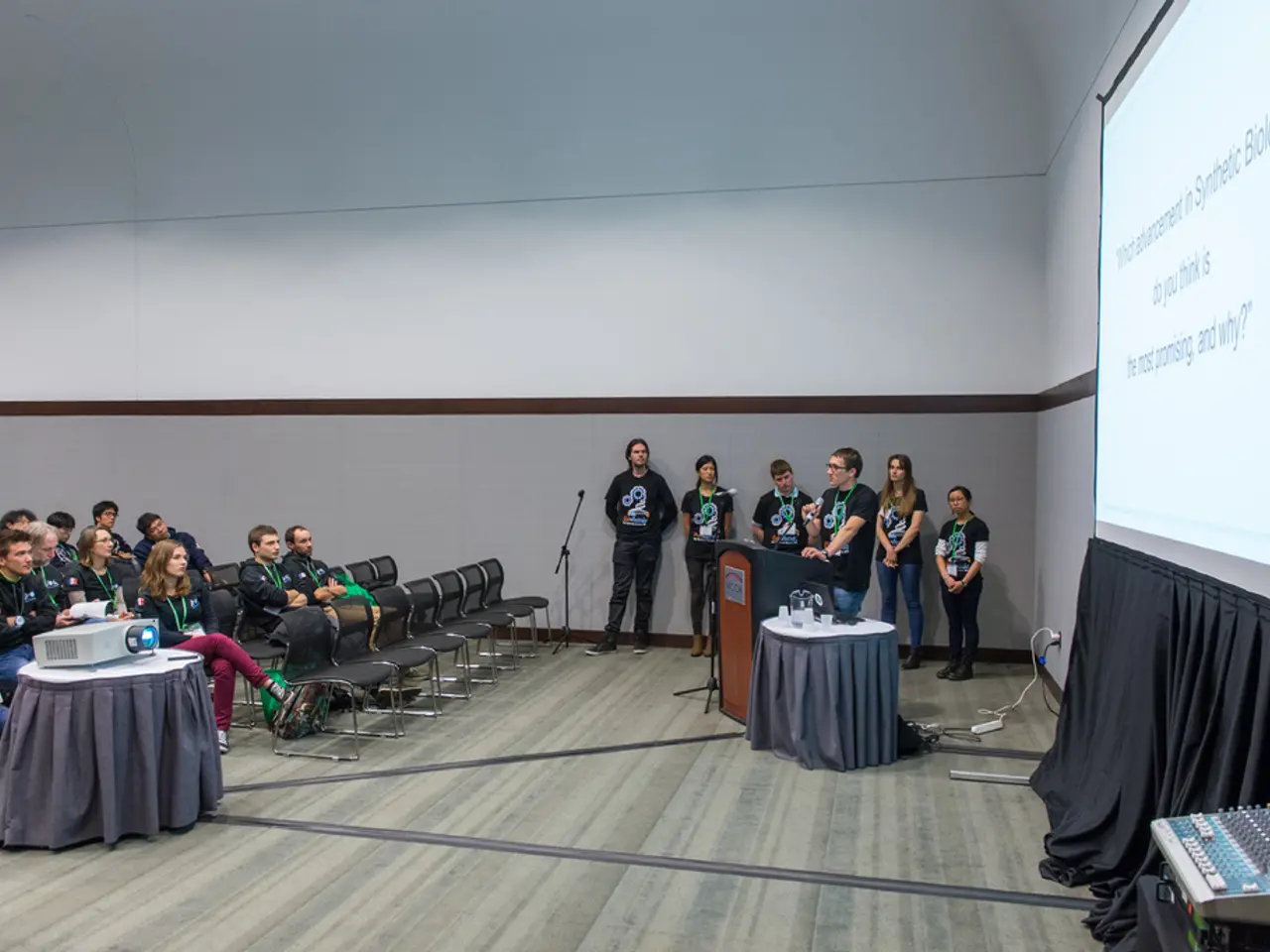Agile Pods and SAP Compatibility: A Pragmatic Examination of Successful (and Unsuccessful) Integration
In the realm of enterprise software implementation, the Scaled Agile Framework (SAFe) and Agile Pods are revolutionizing the way organizations approach large-scale Agile projects, particularly in SAP environments.
SAFe serves as the enterprise's operating system, synchronizing strategy, portfolios, and delivery trains, while Agile Pods are autonomous delivery teams that ship real features sprint after sprint. In larger organizations, SAFe is often adopted to bring alignment and governance to agile practices at scale.
Agile Pods, when effectively implemented in SAP projects, function as cross-functional, autonomous teams responsible for end-to-end business outcomes, not just technical tasks. This approach improves speed, adaptability, and ownership while integrating SAP-specific compliance and enterprise requirements.
To achieve this, Agile Pods are aligned with SAP’s official methodologies, such as SAP Activate, ensuring each pod follows SAP’s phased delivery approach. This guarantees technical alignment and compliance with SAP best practices. The combination of Agile Pods with the Scaled Agile Framework (SAFe) at the enterprise level provides the necessary governance, coordination, and alignment across multiple SAP workstreams.
Continuous improvement habits, such as frequent, focused retrospectives, are embedded within the team’s workflow to cultivate adaptability and smart decision-making. Cross-functional ownership is ensured by assembling pods with all required skills—business, functional, and technical experts—so they are accountable for delivering complete capabilities from analysis through deployment.
Governance mechanisms and automated controls, such as CI/CD pipelines and drift detection for configuration management, help maintain SAP system integrity and enterprise standards without impeding the pods’ speed.
Agile Pods are designed for speed, adaptability, and cross-functional ownership and can work in ERP systems, compliance-heavy environments, and enterprise-wide change. They offer a way to bring agility without abandoning discipline in SAP projects, but it only works if the team inside the pod is experienced enough to handle ambiguity and aligned with the business.
At Inclusion Cloud, they focus on building pods with the right expertise from the start, using an AI-powered recruiting engine to find candidates with SAP certifications, proven implementation experience, technical depth, and soft skills. This model drastically reduces ramp-up time, bringing in a team that's worked together, understands the SAP landscape, and knows how to deliver under agile principles.
The broader shift in IT and enterprise delivery models is towards companies buying outcomes instead of platforms, and Agile Pods fit this evolution because they're structured around accountability. SAFe and Agile Pods work very well together, providing a complementary approach for SAP projects. SAP Activate and Agile Pods are highly compatible, as they can be integrated to meet compliance, align with SAP's official playbook, and still gain the speed, ownership, and adaptability that Agile Pods provide.
In conclusion, effective implementation of Agile Pods in SAP projects hinges on tailoring them to SAP’s context, combining them with SAFe for scaled governance, fostering continuous improvement, and embedding compliance through SAP-aligned methodologies and automated controls. This framework enables SAP projects to accelerate delivery cycles, increase flexibility to change, and cultivate true cross-functional ownership within enterprise boundaries.
- To enhance strategic alignment and ensure compliance within the enterprise, the Scaled Agile Framework (SAFe) and Agile Pods can be combined, with Agile Pods being adjusted to SAP's context and governed by SAFe, thereby integrating SAP-specific methodologies and automated controls.
- In the pursuit of continuous improvement and smart decision-making, Agile Pods, when aligned with SAP Activate, embed frequent, focused retrospectives into their workflow, maintaining technical alignment, facilitating compliance, and ensuring adaptability in SAP projects.




